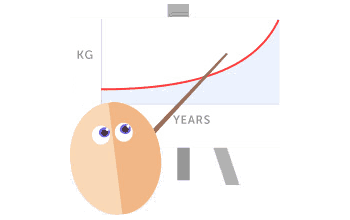Red is your food data, blue is my calculated TDEE by adding on 3500 cals per lb lost. Comments ?
Log in to view your messages, post comments, update your blog or tracker.
34 posts
Page 3 of 3
Red is your food data, blue is my calculated TDEE by adding on 3500 cals per lb lost. Comments ?
It seems highly unlikely that a sedentary middle aged woman of BMI around 30 (even doing 3x30secs of HIIT x3 and living in a cold house) could possibly have a TDEE as high as 3000!!! Of course I could be overestimating calories eaten but that also seems highly unlikely! Equally unlikely is a TDEE of under 1000 unless I was in a coma and even then it should be more!
Perhaps we need to consider energy balance over a much bigger timescale? What happens if you add up all the cals consumed and the weight loss and work out the calculated TDEE for example?
Also, I think there is more going on than meets the eye, particularly the increased losses up to a point with increased feed day calories and decreased losses with decreased feed day calories. I think there might be some kind of goldilocks zone in which there is a range of calorie intakes that lead to optimum weight loss. For example, for me perhaps that is between an average of 1500 and 2000 cals per day. If I want to lose faster I have to cut calories well below 1500, perhaps to 1000. (Note, these are not figures I 'believe' in just examples of how the concept might work).
It would be interesting to see similar calculations for other members.
Perhaps we need to consider energy balance over a much bigger timescale? What happens if you add up all the cals consumed and the weight loss and work out the calculated TDEE for example?
Also, I think there is more going on than meets the eye, particularly the increased losses up to a point with increased feed day calories and decreased losses with decreased feed day calories. I think there might be some kind of goldilocks zone in which there is a range of calorie intakes that lead to optimum weight loss. For example, for me perhaps that is between an average of 1500 and 2000 cals per day. If I want to lose faster I have to cut calories well below 1500, perhaps to 1000. (Note, these are not figures I 'believe' in just examples of how the concept might work).
It would be interesting to see similar calculations for other members.
Your average food intake was 1635, total weight loss divided by total days is 900 cals/day making 2535 TDEE. This overstates it a bit as you gained and lost some on the way, which would drop the figure by 50-60 cals/day if accounted for.
The 3500 cals/lb used is 7.7 cals/g or about 75% fat. If we drop that to 50% fat then it takes about 140 cals/day off.
Some sort of time shift analysis might be helpful, or maybe you need some new scales. If I take a 0.5 kg gain followed by a 1.5 kg loss to be two weeks of 1 kg gain and bump up your Christmas heavy eating it smooths things a bit as you can see from the graph above (it's a live link to a spreadsheet, not just an image).
The 3500 cals/lb used is 7.7 cals/g or about 75% fat. If we drop that to 50% fat then it takes about 140 cals/day off.
Some sort of time shift analysis might be helpful, or maybe you need some new scales. If I take a 0.5 kg gain followed by a 1.5 kg loss to be two weeks of 1 kg gain and bump up your Christmas heavy eating it smooths things a bit as you can see from the graph above (it's a live link to a spreadsheet, not just an image).
Although the scales are imprecise and inaccurate I think the change should be accurate if imprecise! But I do need new scales, you're right there!
34 posts
Page 3 of 3
| Similar Topics |
|---|
Who is online
Users browsing this forum: No registered users and 3 guests





